Medical Sciences
The Gut Blueprint Probiotics, Prebiotics and the Science of Wellness
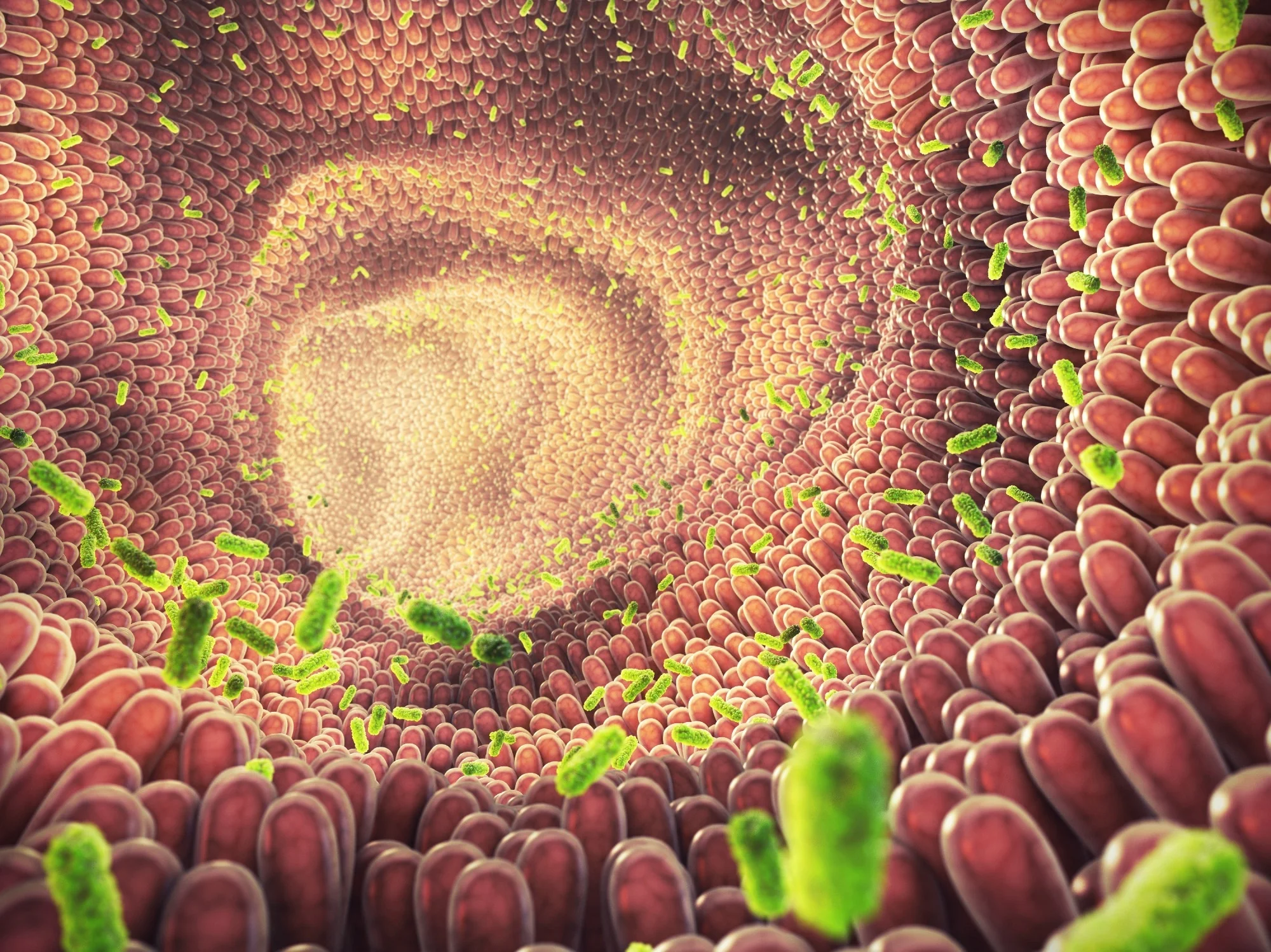
Microbial Marvels Probiotics and Prebiotics for a Healthy Lifestyle
A multitude of individuals in the United States incorporate probiotic and prebiotic supplements into their dietary regimens. The discourse surrounding probiotics often revolves around the numerous health assertions regarding the positive impact of these “beneficial bacteria” on the overall health and well-being of individuals.
RELATED ARTICLE What are the health benefits of probiotics, and what’s the best source for them?
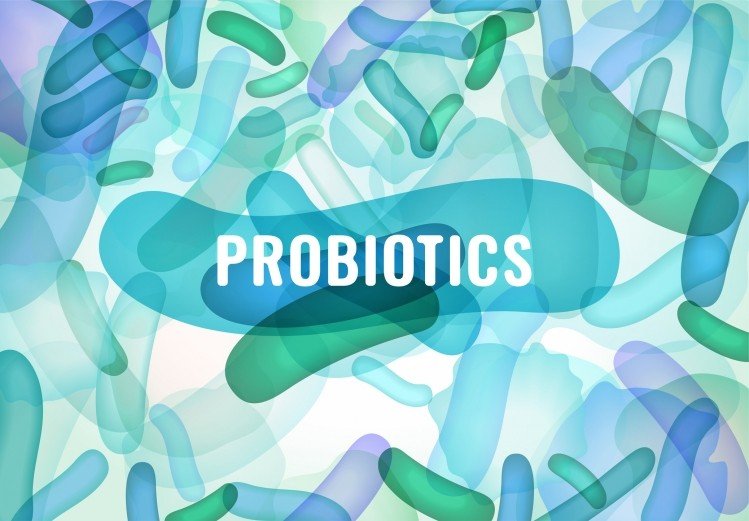
Probiotics
Probiotics encompass microorganisms, primarily bacteria akin to the beneficial ones naturally present in the human gut. Extensive research has delved into the application of probiotics across various gastrointestinal diseases, with notable emphasis on species like Lactobacillus, Bifidobacterium, and Saccharomyces. Nonetheless, the absence of clear directives regarding the optimal use of probiotics and the most suitable strains for distinct gastrointestinal conditions can be perplexing for both family physicians and their patients.
Crucially, probiotics play a pivotal role in sustaining immunologic balance within the gastrointestinal tract, achieved through direct interactions with immune cells. The effectiveness of probiotics is contingent on factors such as species, dosage, and the specific disease being addressed. The duration of therapy is intricately tied to the clinical indication.
Compelling evidence supports the efficacy of probiotics in treating conditions such as acute infectious diarrhea, antibiotic-associated diarrhea, Clostridium difficile–associated diarrhea, hepatic encephalopathy, ulcerative colitis, irritable bowel syndrome, functional gastrointestinal disorders, and necrotizing enterocolitis. Conversely, probiotics have shown limited efficacy in the cases of acute pancreatitis and Crohn’s disease.
Importantly, probiotics are generally deemed safe across diverse age groups, including infants, children, adults, and older patients. However, a note of caution is sounded, especially in populations with compromised immune systems, where prudence in probiotic use is advised.
RELATED ARTICLE Probiotics for Gastrointestinal Conditions: A Summary of the Evidence
Prebiotics and Distinction from Probiotics: Prebiotics, non-digestible components primarily composed of short-chain carbohydrates, play a pivotal role in promoting the growth or activity of beneficial microorganisms, acting as the fuel for probiotics. Foods rich in prebiotics include various fruits and vegetables like onions, garlic, artichokes, avocado, eggplant, legumes, asparagus, and bananas, as well as whole-grain foods such as oats and barley. Synbiotics, a relatively recent term, refer to products combining both probiotic organisms and prebiotics.
Probiotic Benefits and Current Understanding: While the benefits of probiotics were initially championed by Russian scientist Elie Metchnikoff in the early 1900s, the last century has seen clinical studies indicating potential advantages, including disease prevention, digestive aid, nutrient absorption, immune support, vitamin production, inflammation control, and medication breakdown. However, more robust research is needed to delineate the specific roles of different probiotics in various patient populations.
MECHANSIM OF ACTION
Advancements in the realm of probiotics have been substantial, yet a definitive breakthrough in elucidating their mechanism of action remains elusive. The potential positive effects of probiotics on the human body are likely realized through key mechanisms, including competitive exclusion of pathogens, enhancement of intestinal barrier functions, immunomodulation in the host’s body, and the synthesis of neurotransmitters

Probiotics engage in competitive interactions with pathogens, vying for nutrients and receptor-binding sites within the gut, thereby impeding the survival and adherence of pathogens to gut mucosa . Acting as anti-microbial agents, probiotics produce substances such as short-chain fatty acids (SCFA), organic acids, hydrogen peroxide and bacteriocins effectively reducing the population of pathogenic bacteria in the gut. Additionally, probiotics play a role in fortifying the intestinal barrier by stimulating mucin protein production, regulating the expression of tight junction proteins, including occludin and claudin 1, and modulating the immune response in the gastrointestinal tract.
Probiotics extend their influence on the immune system by modulating both innate and adaptive responses, impacting dendritic cells (DC), macrophages, B and T lymphocytes. The interaction with intestinal epithelial cells leads to increased production of anti-inflammatory cytokines, attracting macrophages and mononuclear cells .
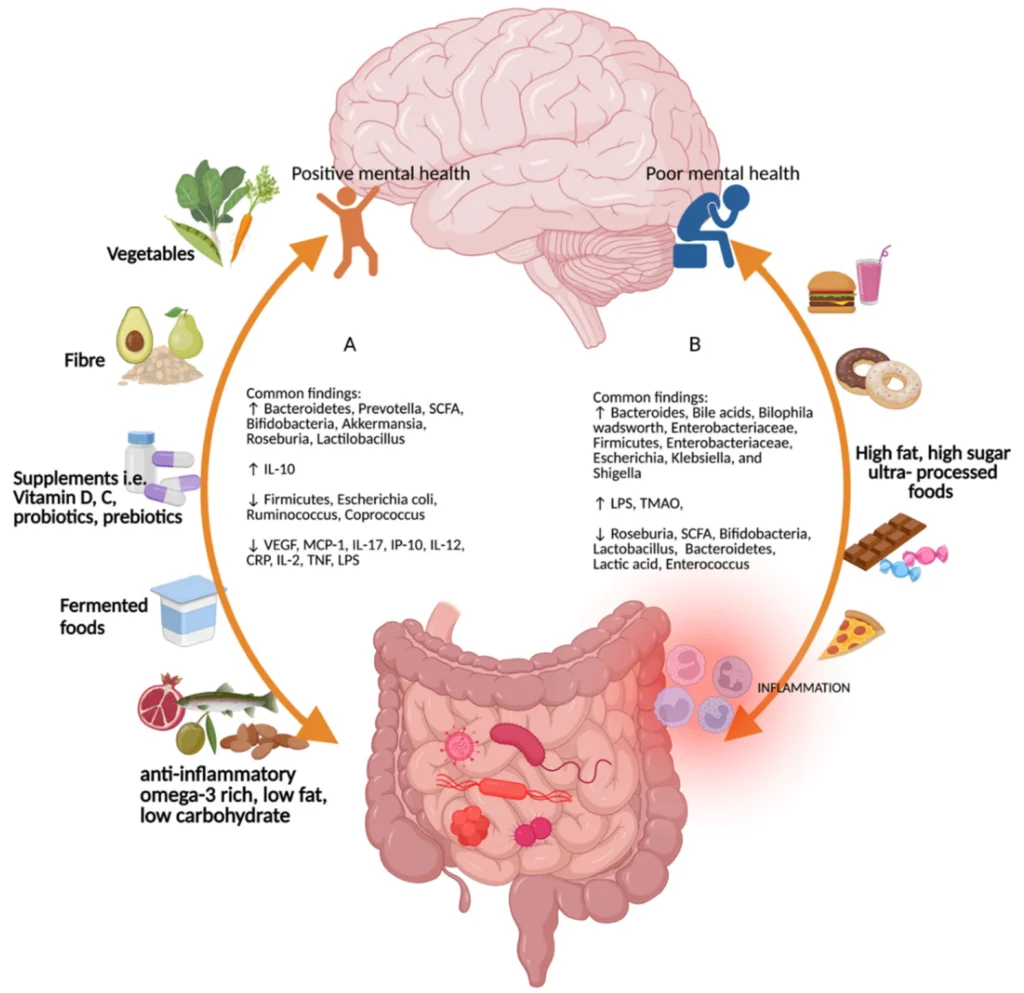
Moreover, probiotics contribute to the gut-brain axis, producing neurotransmitters that include serotonin, gamma-aminobutyric acid (GABA), and dopamine. Specific probiotic strains possess the capacity to modulate levels of these neurotransmitters, influencing mood, behavior, gut motility, and pathways associated with stress
RELATED ARTICLE Probiotics: mechanism of action, health benefits and their application in food industries
PREBIOTCS AND GUT
Probiotics play a crucial role in addressing various digestive issues, particularly through their impact on maintaining a healthy gut environment. These beneficial bacteria, prevalent in probiotics, effectively regulate harmful bacteria, preventing their dominance in the gut. When harmful bacteria prevail, digestive problems such as diarrhea can ensue. Research demonstrates that probiotics contribute to alleviating diarrhea symptoms by reducing both the duration and severity of the condition.
Probiotics come in various types, each featuring distinct strains of bacteria and yeast. Lactobacillus and Bifidobacterium, common probiotic types, prove effective in preventing and treating diarrhea. Saccharomyces boulardii, a yeast-based probiotic, addresses digestive issues such as irritable bowel syndrome (IBS) and inflammatory bowel disease (IBD) while reducing the risk of antibiotic-associated diarrhea.
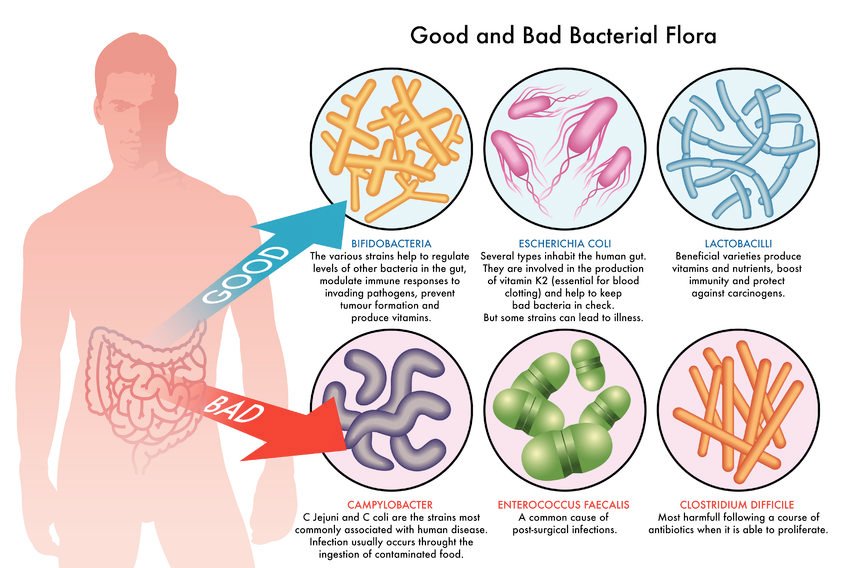
In addition to supplements, probiotics can be sourced from fermented foods like yogurt, kefir, sauerkraut, and kimchi. These foods harbor live cultures of beneficial bacteria that contribute to improved gut health and bolstered immunity. However, it’s crucial to note that not all fermented foods contain probiotics, as some undergo pasteurization or processing methods that eliminate beneficial bacteria.
DIARHEA’S OVERVIEW
Diarrhea is a complex issue classified into various types, each with distinct causes. Probiotics address different types of diarrhea, including acute, chronic, infectious, and traveler’s diarrhea. For acute diarrhea caused by infections, probiotics prove effective in reducing both duration and severity. Chronic diarrhea, symptomatic of underlying health conditions, may not be solely improved by probiotics and requires medical attention.
Scientifically, probiotics have been extensively studied for their effectiveness against diarrhea. They promote the growth of beneficial bacteria, inhibit harmful bacteria, and enhance the gut barrier function. Probiotics are particularly effective in treating antibiotic-associated diarrhea, restoring the balance of gut bacteria disrupted by antibiotics.
When choosing probiotics for diarrhea management, it’s essential to consider specific strains, dosage, and overall suitability. Consulting with healthcare professionals ensures the selection of the right probiotic tailored to individual needs. Incorporating probiotic-rich foods into the diet, maintaining a balanced lifestyle, and considering precautions when using probiotics contribute to effective diarrhea prevention.
Probiotics offer a multifaceted approach to managing digestive issues, with a particular focus on diarrhea. Their diverse benefits, spanning immune support and potential mental health impacts, make them a valuable addition to overall well-being. However, individual considerations and professional guidance are vital to optimizing probiotic use for personalized health goals.

RELATED ARTICLES The Benefits of Taking Probiotics for Diarrhea
Probiotic Supplement Recommendations: It is advised that dividuals undergoing antibiotic treatment, those with inflammatory bowel disease, or individuals with specific conditions like mild recurrent ulcerative colitis, constipation, or atopic dermatitis, may benefit from probiotic supplementation. However, incorporating daily servings of probiotic-rich foods along with prebiotic sources is currently considered the optimal approach.
Cautionary Notes on Probiotic Use: Certain populations, such as sick infants, children with acute infectious diarrhea, individuals with compromised immune systems, and those recovering from recent surgeries, should avoid probiotic supplements. Signs of unsuitability may include symptoms like gas, bloating, constipation, diarrhea, and irritability. Safety considerations, especially regarding potential interactions with medications, should prompt individuals to consult healthcare providers before probiotic use, particularly during pregnancy or breastfeeding.
RELATED ARTICLE Decoding the Oxy-PICU Trial,A Paradigm Shift in Pediatric Critical Care
Selecting a Probiotic Supplement: Probiotic supplements, categorized by the U.S. Food and Drug Administration (FDA) as food ingredients, drugs, or dietary supplements, lack FDA regulation. Third-party testing, evidenced by seals of approval from organizations like the United States Pharmacopeial Convention or NSF, enhances confidence in purity and potency. Certification is recommended due to reported cases of uncertified products containing undisclosed microorganisms, posing health risks. Consideration of delivery methods, refrigeration requirements, and attention to expiration dates are essential when choosing probiotic supplements.
Conclusion on Probiotic Health Benefits: Research on probiotics is ongoing, and definitive conclusions regarding their efficacy and optimal usage remain elusive. While generally considered low-risk and potentially beneficial, consulting healthcare providers before incorporating probiotics into one’s routine is advisable. For now, emphasis on maintaining a nutrient-rich diet with diverse sources of probiotics and prebiotics is recommended
Veterinary News
Blue tongue Alert: Norfolk Livestock Farmers Navigate New Challenges

Expanding Control Zones: Norfolk’s Battle Against Blue tongue Outbreak
Norfolk’s livestock farming community faces a heightened challenge as the bluetongue control zone expands in response to new cases of this potentially fatal animal disease. Bluetongue, affecting ruminants such as cattle, sheep, goats, deer, and camelids, has raised concerns after the confirmation of two infected cattle on a holding near Norwich. The total number of cases in the county has now reached 21 since the initial discovery on a Cantley farm in the Broads on December 8, signaling the need for increased vigilance and control measures.
RESOURCED ARTICLE Norfolk bluetongue control zone extended amid new cases

The regulatory authority in charge of such matters, the Department for Environment, Food & Rural Affairs (Defra), recently confirmed the extension of the temporary control zone (TCZ) in response to the latest developments. This 10-kilometer zone was initially established to facilitate focused surveillance efforts and restrict livestock movements, aiming to prevent the disease’s further spread. All preceding cases were contained within the TCZ, but the most recent instances involved animals grazing just outside the zone during a high-risk period. Consequently, the TCZ’s boundaries have been adjusted, extending it toward Norwich to address this evolving situation effectively.
An interesting departure from previous protocol is the decision not to cull the infected animals this time. Defra has opted for an alternative approach, restricting these animals at their current locations and implementing disease mitigation measures. This strategic shift is attributed to a recent reduction in midge activity, diminishing the risk of onward transmission. The link between bluetongue and infected midges is crucial to understanding its spread, as it is believed that the disease was introduced to Norfolk and Kent by these tiny vectors, carried across the Channel from Europe during optimal wind and temperature conditions in September or October.

However, despite the absence of evidence suggesting the disease’s circulation through midges in the UK, precautionary measures within the TCZ are causing disruption and uncertainty for local livestock farms. Specific licenses are now mandatory for moving animals out of the zone, with permission granted only under circumstances of “urgent and genuine welfare need” or for direct transportation to a designated abattoir. This has added an extra layer of complexity for farmers who must navigate these restrictions while ensuring the well-being of their livestock.
RAED MORE INFORMATIVE ARTICLE UK’s Milestone In Genetic Medicine,CRISPR Therapy Treating Sickle-Cell Disease and β-Thalassaemia

In conclusion, the expansion of the bluetongue control zone in Norfolk reflects the ongoing challenges in managing and preventing the spread of this disease. The decision to extend the TCZ, along with the nuanced approach to handling infected animals, showcases the dynamic nature of the situation. Livestock farmers must now contend with both the immediate implications of the disease and the regulatory hurdles imposed by specific licenses, emphasizing the need for a coordinated and adaptive response to safeguard the region’s agricultural interests. Stay informed, stay vigilant, and adhere to the evolving guidelines to ensure the well-being of both animals and the farming community
Medical Sciences
The Nexus of Coronavirus and the Nervous System
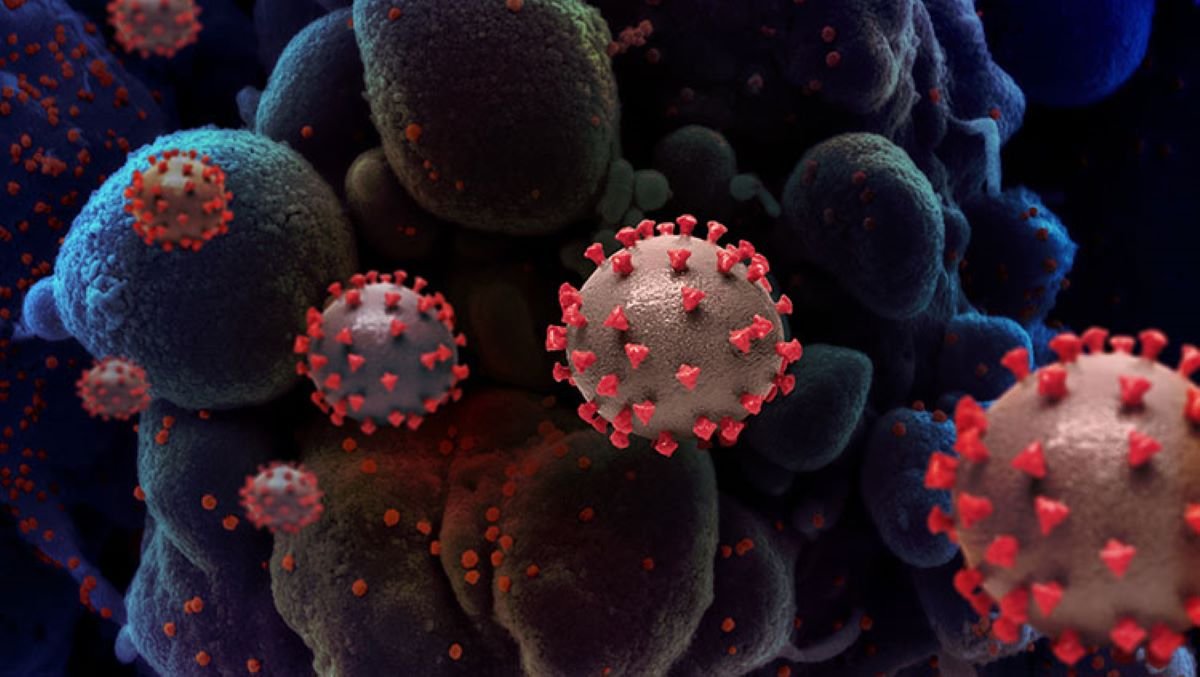
The outbreak of Severe Acute Respiratory Syndrome coronavirus 2 (SARS-CoV-2) has ushered in the unprecedented COVID-19 pandemic. Understanding the virus and its effects on the body, particularly the nervous system, is crucial in navigating these challenging times.
Introduction: Unveiling SARS-CoV-2 and COVID-19

Coronaviruses, typically linked to mild respiratory illnesses like the common cold, took an unexpected turn with the emergence of SARS-CoV-2, causing the global spread of COVID-19. This disease showcases a diverse range of symptoms, from mild discomfort to severe respiratory distress.
Neurological Impacts Unraveling the Connection
Research underscores that neurological symptoms associated with COVID-19 likely stem from the body’s immune response rather than direct viral invasion. Comprehensive studies analyzing cerebrospinal fluid have revealed the presence of antibodies, offering insights into the intricate interplay between the virus and neurological complications.
Immediate Effects on the Nervous System A Closer Look

While a significant proportion of individuals infected with SARS-CoV-2 experience mild symptoms, those requiring hospitalization often face brain-related complications. These can manifest as muscle aches, headaches, and, in severe cases, seizures or strokes. Understanding these immediate effects is paramount in providing holistic care to COVID-19 patients.
Vascular Complications and Blood Clots A Silent Threat
The virus’s interaction with receptors on blood vessel cells presents a silent threat, leading to vessel weakening, leakage, and microbleeds in the brain. Moreover, COVID-19 induces blood clot formation, heightening the risks of strokes, heart attacks, and organ damage. Maintaining optimal oxygen levels becomes imperative in preventing cognitive disorders and other severe consequences.
Recovery and Long Term Effects The Road to Healing
While a majority recover within weeks, a subset of individuals grapple with prolonged dysfunction across various body systems. The term “long COVID” encapsulates persistent symptoms, such as fatigue, cognitive difficulties, and pain. Recognizing and addressing these lingering effects is essential for promoting the well-being of those affected and informing future healthcare strategies.
Connection to Neurological Disorders Assessing Risk Factors
Individuals with pre-existing neurological conditions may confront an elevated risk of severe illness from COVID-19. Understanding the virus’s impact on the immune system emphasizes the need for vigilance in monitoring potential long-term complications, including stroke, dementia, and muscle and nerve damage.
Striking a Delicate Balance Navigating Neurological Safety in the Realm of COVID-19 Vaccines

In the current landscape of uncertainty, the COVID-19 vaccination stands out as a crucial tool in the prevention of severe illness. While the general consensus is that vaccines are safe, it’s essential to acknowledge that isolated instances of Guillain-Barre Syndrome have been associated with specific vaccine formulations.
The continuous vigilance exercised by authoritative bodies such as the Centers for Disease Control and Prevention (CDC) and the Food and Drug Administration (FDA) plays a pivotal role. This ongoing monitoring ensures that timely updates on vaccine safety are provided, effectively managing the delicate balance between safeguarding health and addressing potential risks.
The benefits of vaccination and the potential risks associated with certain formulations underscores the importance of remaining informed. Individuals are encouraged to stay abreast of the latest information from trusted health organizations, enabling them to make informed decisions about their well-being in the ongoing fight against COVID-19.
FOR MORE INTERESTING ARTICLES Transforming Heart Failure Care: Unveiling Abbott’s ARIES Trial Breakthrough with Aspirin-Free HeartMate 3
Conclusion
In the ever-changing landscape of the COVID-19 scenario, maintaining a well-informed perspective on the virus’s effects on the nervous system is of utmost importance. Building a strong foundation for comprehension involves identifying and applying pertinent keywords linked to SARS-CoV-2, COVID-19, and related subjects.
Amid the persistent challenges presented by COVID-19 globally, having a profound understanding of the virus’s impact on the nervous system becomes a source of empowerment for individuals, enabling them to make wise decisions about their health. The collective effort of staying informed and adhering to recommended guidelines allows us to collectively navigate the uncharted territories of this pandemic, striving towards a future characterized by improved health and unwavering resilience.
Medical Sciences
Nanodrones Against Cancer,UNIST’s Innovation Marks a New Era in Treatment
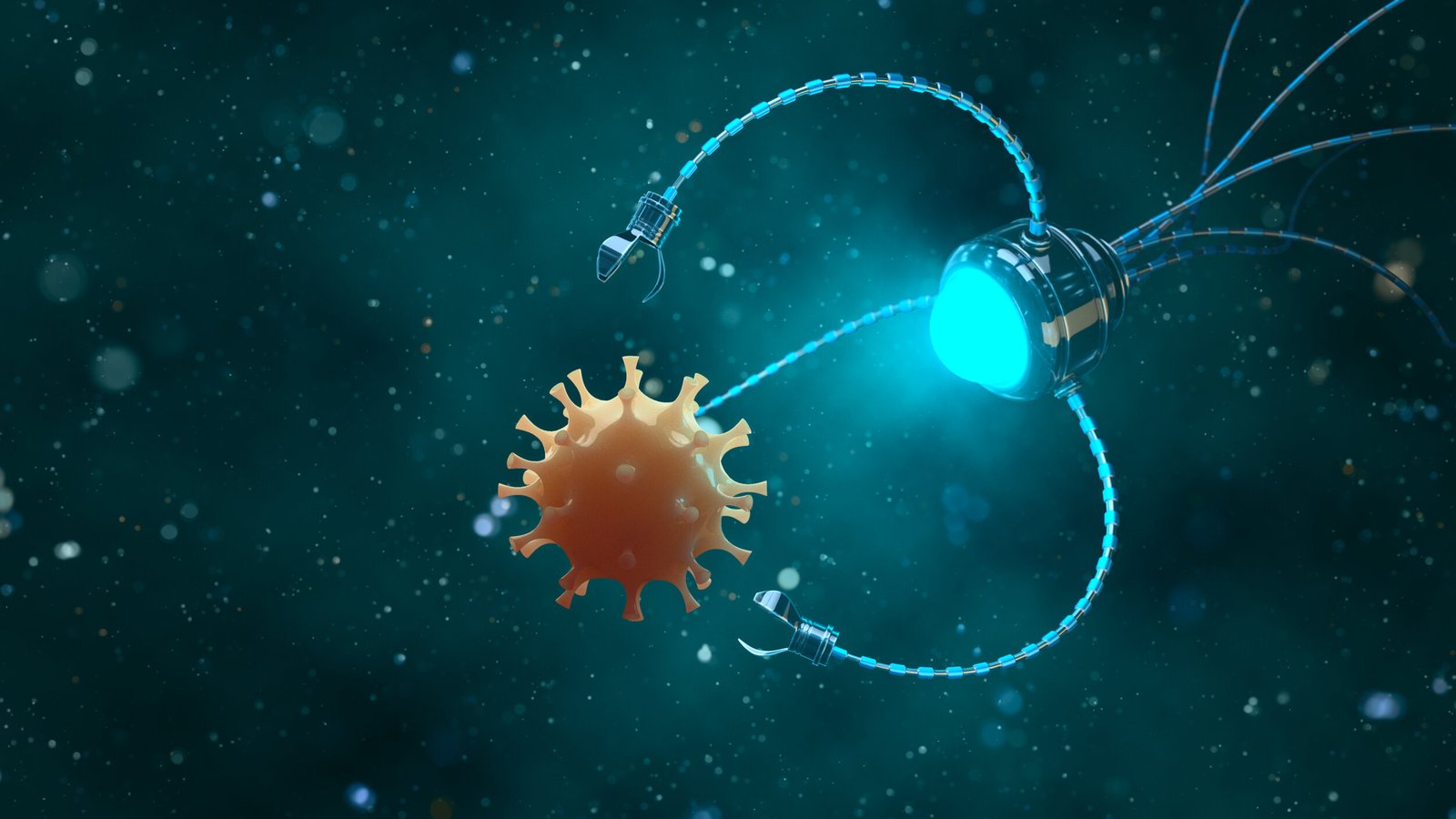
Game-Changer in Cancer Research: UNIST’s Nanodrones Take the Spotlight
In the realm of groundbreaking cancer treatment breakthroughs, the spotlight is now on the Ulsan National Institute of Science and Technology (UNIST), where a dynamic team of researchers has unveiled a potential game-changer. Imagine a world where tiny nanodrones, aptly named NK cell-engaging nanodrones (NKeNDs), take center stage in the fight against cancer.
RELATED ARTICLE New revolutionary nanodrones enable targeted cancer treatment
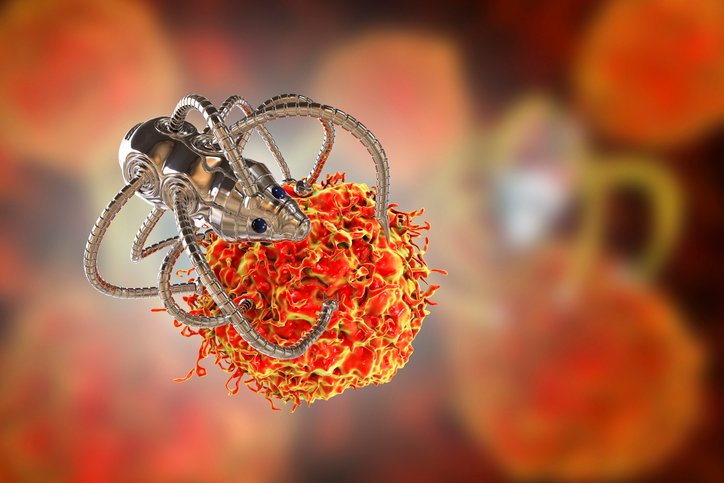
Led by the innovative minds of Professors Sebyung Kang and Sung Ho Park from the Department of Biological Sciences, this team has cracked the code to revolutionize cancer treatment. These nanodrones, far from the futuristic sci-fi portrayals, are engineered to specifically target and obliterate cancer cells, marking a significant leap forward in the battle against this relentless disease.

At the heart of this breakthrough lies the ability of these nanodrones to engage natural killer (NK) cells, the body’s frontline soldiers against cancer. What sets the NKeNDs apart is their precision – think of them as nanoscale guided missiles homing in on cancer cells with unparalleled accuracy. The secret sauce involves utilizing AaLS protein cage nanoparticles as the foundation for these nanodrones, incorporating specific cancer-targeting and NK cell-recruiting ligands, aptly named HER2 @NKeND and EGFR@NKeND.
Lab tests have showcased the remarkable ability of these nanodrones to selectively bind to various types of cancer cells while rallying NK cells to mount a defense against the invaders. The real breakthrough emerged during mice trials, where administering HER2 @NKeNDs alongside human immune cells resulted in a significant slowdown in tumor growth, all without adverse effects.

Professor Kang Se-byung, brimming with excitement, highlighted the potential for customizing treatments for different cancers using these NK cell delivery nanodrones. It’s not merely about targeting cancer cells; it’s about doing so with surgical precision, minimizing collateral damage and maximizing the impact of the body’s immune system.
MORE LATEST ARTICLE Brain Clot Revolution, Vortex Ultrasound Tornado in Brain Health
This groundbreaking study, published in Nano Today, marks a pivotal moment in scientific progress. With the support of various institutions dedicated to advancing knowledge, the door to a new era in cancer treatment swings wide open. Nanodrones may just be the superheroes we’ve been yearning for, offering hope and resilience in the face of one of humanity’s most formidable adversaries. As we raise a toast to science and innovation, the journey towards conquering cancer takes a remarkable leap forward. Cheers to the heroes of the microscopic world.
-
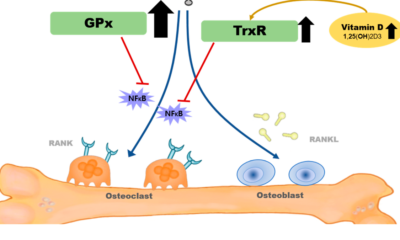
 Medical Sciences8 months ago
Medical Sciences8 months agoSelenium Nanoparticles Redefining Postmenopausal Osteoporosis Treatment with a Novel Approach
-

 Medical Sciences8 months ago
Medical Sciences8 months agoTransforming Heart Failure Care: Unveiling Abbott’s ARIES Trial Breakthrough with Aspirin-Free HeartMate 3
-
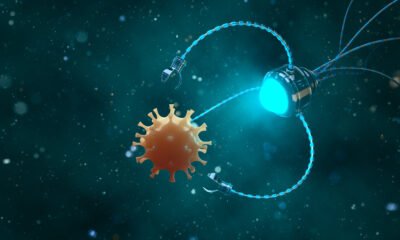
 Medical Sciences7 months ago
Medical Sciences7 months agoNanodrones Against Cancer,UNIST’s Innovation Marks a New Era in Treatment
-

 Medical Sciences8 months ago
Medical Sciences8 months agoGeriatric Care in the Face of Non-ST Elevated Myocardial Infarction and Acute Coronary Syndrome
-
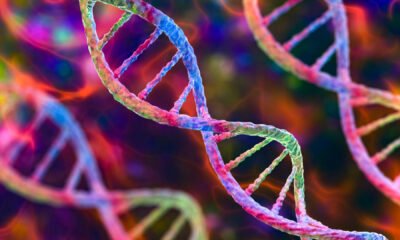
 Blog8 months ago
Blog8 months agoUK’s Milestone In Genetic Medicine,CRISPR Therapy Treating Sickle-Cell Disease and β-Thalassaemia
-

 Medical Research8 months ago
Medical Research8 months agoA New Chapter in Vision Restoration By Rebuilding Retinal Ganglion Cells
-
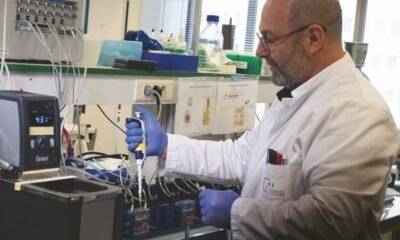
 Blog8 months ago
Blog8 months agoCutting-Edge Diagnostic Technology Handheld Device for Alzheimer’s and Parkinson’s Diseases
-

 Medical Sciences8 months ago
Medical Sciences8 months agoRegenerative Surgery A Comprehensive Innovation by Stem Cells in Face and Eye Transplantation
